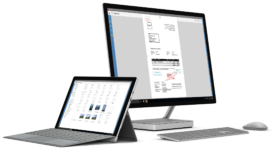Document Management Systems
What are Document Management Systems?
Document Management Systems (DMS) are software programmes that manage the creation, storage and control of documents electronically. Document Management Systems originally focused on the management of digitised documents by using keywords for retrieval. However, the effort compared to normal document storage on a network drive was considerably higher. The reasons for this included high costs for specially trained personnel and the necessary IT infrastructure as well as an enormous amount of time spent on keywording.
All of this work only ended up being worthwhile if the documents that had been stored for a long time had to be retrieved quickly. For example, in the case of meeting legal obligations, such as in the event of an audit. This means that it has long been difficult to calculate the real economic benefits of a digital Document Management System.
Today’s Digital Document Management Systems offer many more functions and advantages than simple document management for archiving purposes, and are no longer limited to the management of documents that have been digitised, but take care of all types of digital and electronic documents. The effort to store them in a central DMS is significantly reduced due to a large number of (partly automated) import options. Thanks to OCR text recognition, it is no longer necessary to manually keyword the documents: the DMS software can search the contents of the documents in a matter of seconds.
Modern Digital Document Management Systems such as AMAGNO, are called Digital Workplaces because they automate lots of office work which was previously manual which, freeing up staff and increasing productivity. Digital Workplace solutions help employees to such an extent that not only do they save time, they also regain work quality. Modern DMS systems help you to Work Smarter, Not Harder.




